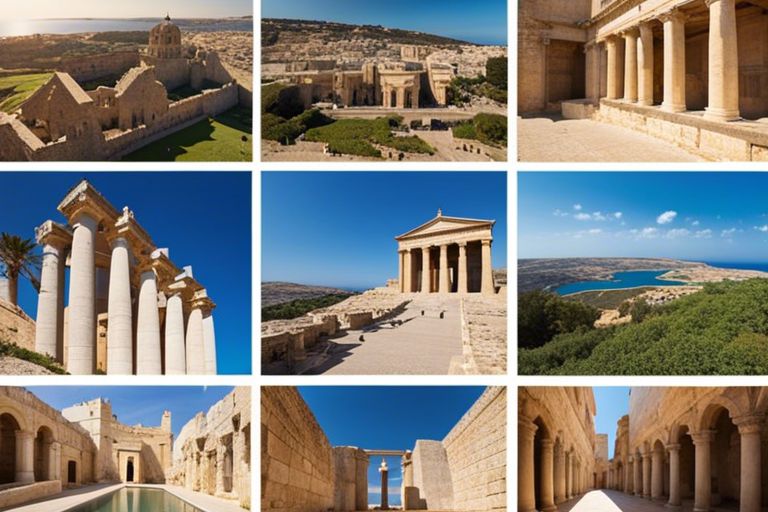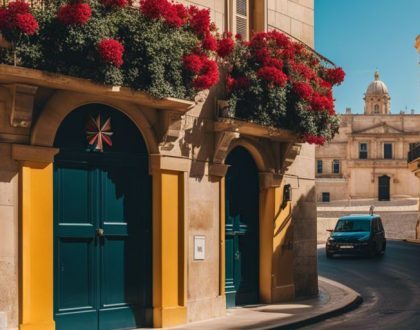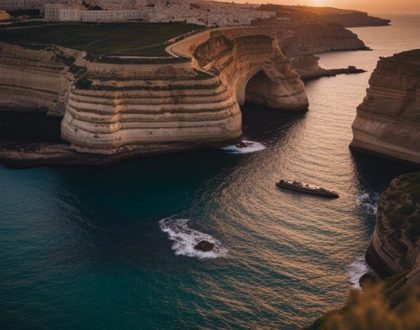Top 10 Historical Sites in Malta

Delve into the rich history of Malta as we explore the top 10 historical sites that have shaped this stunning Mediterranean island. From ancient temples to medieval citadels, each site offers a glimpse into Malta’s fascinating past. Discover the unique heritage and cultural significance of these remarkable landmarks that have stood the test of time. So grab your sun hat and camera, and let’s journey through Malta’s most iconic historical treasures.
Hal Saflieni Hypogeum
Subterranean Structure
Assuming you are looking for a unique historical site in Malta, the Hal Saflieni Hypogeum is a must-visit. This underground structure dates back over 5,000 years and is an incredible example of ancient engineering and architecture. The Hypogeum is a complex of underground chambers carved out of solid rock, some reaching depths of up to 10 meters.
Prehistoric Burial Site
An important aspect of the Hal Saflieni Hypogeum is its use as a prehistoric burial site. It is believed that the Hypogeum served as a necropolis for the people of ancient Malta, where thousands of remains were discovered. The site offers a rare glimpse into the burial rituals and customs of the prehistoric people who inhabited the island.
A fascinating fact is that the Hypogeum is considered one of the most significant archaeological sites in Malta and is a UNESCO World Heritage Site. The intricate carvings, paintings, and acoustics found within the chambers add to the mystery and allure of this ancient underground structure.
Valletta
Capital city
If you’re visiting Malta, a trip to the capital city of Valletta is a must. This UNESCO World Heritage Site is a treasure trove of history, culture, and stunning architecture. Any history buff will be thrilled to explore the maze of charming streets, grand palaces, and impressive churches that date back centuries.
Fortified architecture
Regarding architecture in Valletta, the fortified structures steal the show. The city’s strategic location on the Grand Harbor led to the construction of massive ramparts, bastions, and forts to protect it from invaders. It is awe-inspiring to see the way these structures have withstood the test of time, standing as a testament to Malta’s resilient past.
Mdina
Ancient walled city
To truly appreciate the historical significance of Mdina, one must step into its ancient walled city. The imposing walls that surround the city have stood for centuries, protecting its rich history and culture. Walking through the narrow streets, you can almost feel the whispers of the past echoing around you.
Medieval history
Ancient history is just the beginning of Mdina’s story. The medieval period saw the city flourish as a center of culture and trade. For instance, the cathedral of Mdina is a stunning example of medieval architecture, with its intricate designs and beautiful artwork adorning the interior.
One of the most fascinating aspects of Mdina’s medieval history is its strategic importance during the various conflicts that shaped the region. The city’s fortifications played a crucial role in defending against invasions and attacks, making it a key stronghold in the Mediterranean.
Hagar Qim Temples
Megalithic temple complex
After exploring the scenic landscapes of Malta, a visit to the Hagar Qim Temples is a must for history enthusiasts. This megalithic temple complex dates back to 3600-3200 BC, making it one of the oldest religious sites in the world. The site consists of several limestone structures, including a main temple and a smaller one, all thought to be used for rituals and ceremonies.
UNESCO heritage
On the list of UNESCO World Heritage Sites, the Hagar Qim Temples are a treasure trove of Malta’s rich history. Clearly, the preservation of these ancient temples is crucial for future generations to understand the island’s past and cultural significance. This recognition by UNESCO highlights the importance of protecting these sites for their historical value.
This UNESCO recognition signifies the global importance of the Hagar Qim Temples. The temples showcase the advanced architectural knowledge of their builders and offer insights into prehistoric religious practices. Moreover, their inclusion on the prestigious list ensures that efforts will be made to safeguard and conserve these remarkable structures for the future.
Mnajdra Temples
Astronomical Alignments
Once again, the Mnajdra Temples in Malta prove to be a remarkable archaeological site with their intriguing astronomical alignments. The temples are believed to be aligned with the solstices, showcasing the advanced knowledge of the builders in terms of celestial movements. Visitors can witness the alignment of the sun at significant points during the summer and winter solstices, adding a mystical element to the site.
Ancient Worship Site
On the outskirts of Mnajdra Temples lies an ancient worship site where rituals were performed by the prehistoric inhabitants of Malta. This sacred area is marked by well-preserved altars and religious artifacts, offering insights into the spiritual practices of the past. Archaeologists believe that ceremonies honoring deities and celestial events took place here, making it a crucial part of understanding the beliefs of the temple builders.
To fully appreciate the significance of the ancient worship site at Mnajdra Temples, visitors can explore the mysterious carvings and engravings that adorn the stones, depicting symbolic representations of the culture and religious practices of the time. This sacred space provides a glimpse into the spiritual world of the temple builders and their connection to the divine.
St. John’s Co-Cathedral
Baroque architecture
To truly appreciate the exquisite beauty of St. John’s Co-Cathedral in Malta, one must admire its stunning Baroque architecture. The intricate details on the facade and ornate decorations reflect the opulence of the era, making it a must-visit for history and architecture enthusiasts.
Artistic interior
There’s no shortage of awe-inspiring moments when you step inside St. John’s Co-Cathedral. The artistic interior is a masterpiece in itself, with intricate marble floors, richly decorated chapels, and stunning frescoes adorning the ceilings. Each corner of the cathedral tells a story of Malta’s rich history and cultural heritage.
To fully appreciate the artistic interior of St. John’s Co-Cathedral, take a moment to admire the intricate carvings of the stone walls and the gilded artwork that adorns the chapels. The highlight of the visit is undoubtedly Caravaggio’s masterpiece, ‘The Beheading of Saint John the Baptist,’ which is a striking piece that draws visitors from around the world.
The Three Cities
Maritime history
Now, the Three Cities in Malta, made up of Vittoriosa, Senglea, and Cospicua, showcase a rich maritime history. These historic towns were key players in Malta’s history, with their strategic location providing a stronghold for naval operations.
Fortified cities
You’ll be amazed by the impressive fortifications that still stand in the Three Cities, dating back centuries. These fortifications played a crucial role in Malta’s defense, with the cities being heavily fortified against attacks from enemy forces. Walking through the narrow streets and along the ramparts, you can almost feel the history that surrounds you.
It’s truly fascinating to see how the Three Cities have evolved over time, while still retaining their unique charm and historical significance. From the stunning views of the Grand Harbour to the well-preserved architecture, a visit to the Three Cities is a journey back in time.
Tarxien Temples
Elaborate stonework
Many visitors are captivated by the intricate stonework found at the Tarxien Temples in Malta. The temples, dating back to 3600 BC, showcase a high level of craftsmanship with detailed carvings and engravings on the massive limestone blocks.
Prehistoric significance
There’s a sense of wonder when you realize the prehistoric significance of the Tarxien Temples. As one of the oldest free-standing structures in the world, the temples offer a glimpse into the ceremonial practices and beliefs of the Neolithic people who inhabited Malta.
You can imagine the rituals that took place within the temple walls, with evidence of animal sacrifices and the presence of fertility symbols like the famous ‘Fat Lady’ statue. The significance of these temples extends beyond their historical value, offering a connection to our ancient ancestors.
With its rich history and archaeological importance, the Tarxien Temples stand as a testament to Malta’s deep-rooted past. Visitors can explore the site and marvel at the well-preserved structures that continue to reveal secrets of the island’s early inhabitants.
Ggantija Temples
Neolithic construction
Not much is known about the construction of the Ggantija Temples, but they are believed to have been built between 3600 and 3200 BC, making them some of the oldest free-standing structures in the world. These temples showcase the remarkable engineering skills of the Neolithic people who designed and built them.
Oldest religious site
You will be amazed to learn that the Ggantija Temples in Malta are considered to be the oldest religious site in the world, predating the Pyramids of Egypt and Stonehenge. The temples are even older than the famous megalithic temples of Gozo.
Neolithic societies in Malta were highly advanced for their time, and the construction of the Ggantija Temples is a testament to their architectural prowess. The temples are made of massive limestone blocks, with the largest ones weighing over 50 tons.
Conclusion
Hence, exploring the top historical sites in Malta can provide a fascinating journey through centuries of history and culture. From ancient temples to medieval cities, each site offers a unique glimpse into Malta’s rich past. Whether you are a history buff or simply enjoy exploring new places, Malta’s historical sites are sure to captivate and inspire you. Make sure to visit these top 10 historical sites to truly immerse yourself in Malta’s incredible history.
FAQs:
What is the Hal Saflieni Hypogeum?
The Hal Saflieni Hypogeum is an underground structure in Malta dating back over 5,000 years, known for its ancient engineering and as a prehistoric burial site.
Why is Valletta significant in Malta’s history?
Valletta, Malta’s capital city, is a UNESCO World Heritage Site renowned for its fortified architecture, grand palaces, and historic churches, reflecting the island’s resilient past.
What is unique about the Mnajdra Temples?
The Mnajdra Temples boast intriguing astronomical alignments believed to be tied to solstices, showcasing the advanced knowledge of celestial movements by the ancient builders.
What can visitors expect at St. John’s Co-Cathedral?
Visitors to St. John’s Co-Cathedral can marvel at its stunning Baroque architecture, artistic interior, and famous masterpiece, ‘The Beheading of Saint John the Baptist’ by Caravaggio.
Why are the Three Cities significant in Malta’s history?
The Three Cities, comprising Vittoriosa, Senglea, and Cospicua, showcase Malta’s rich maritime history with their fortified structures and strategic location for naval operations.
Recommended Posts

The Maltese Cross Symbolism
May 17, 2024

Malta’s Coastal Drives for Road Trippers
May 17, 2024

Malta’s iGaming Frontier – Best Brands
May 17, 2024


